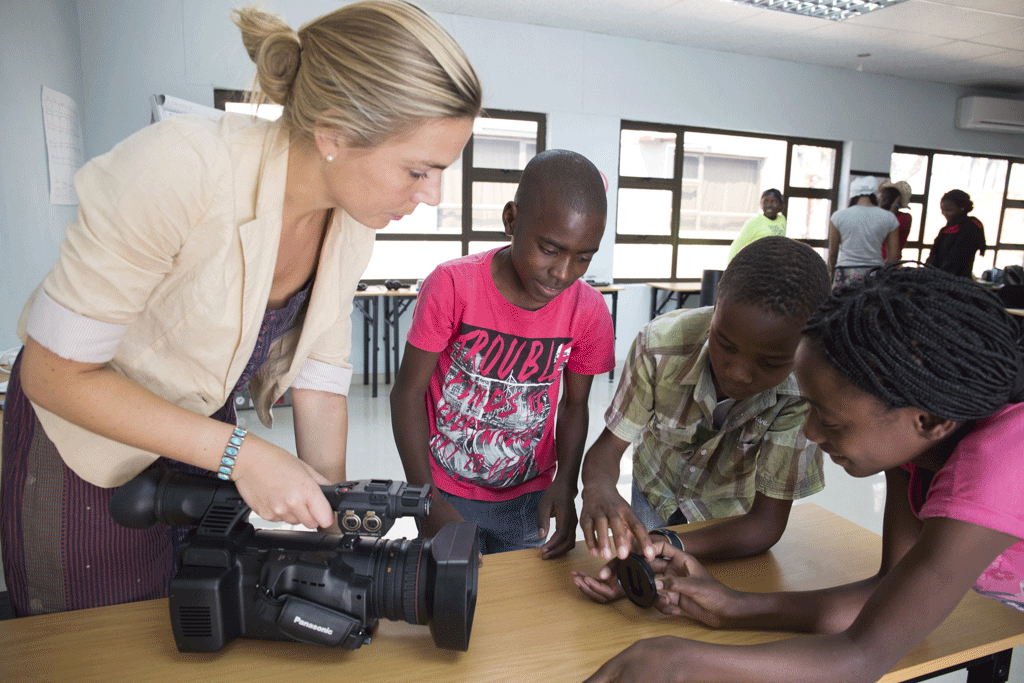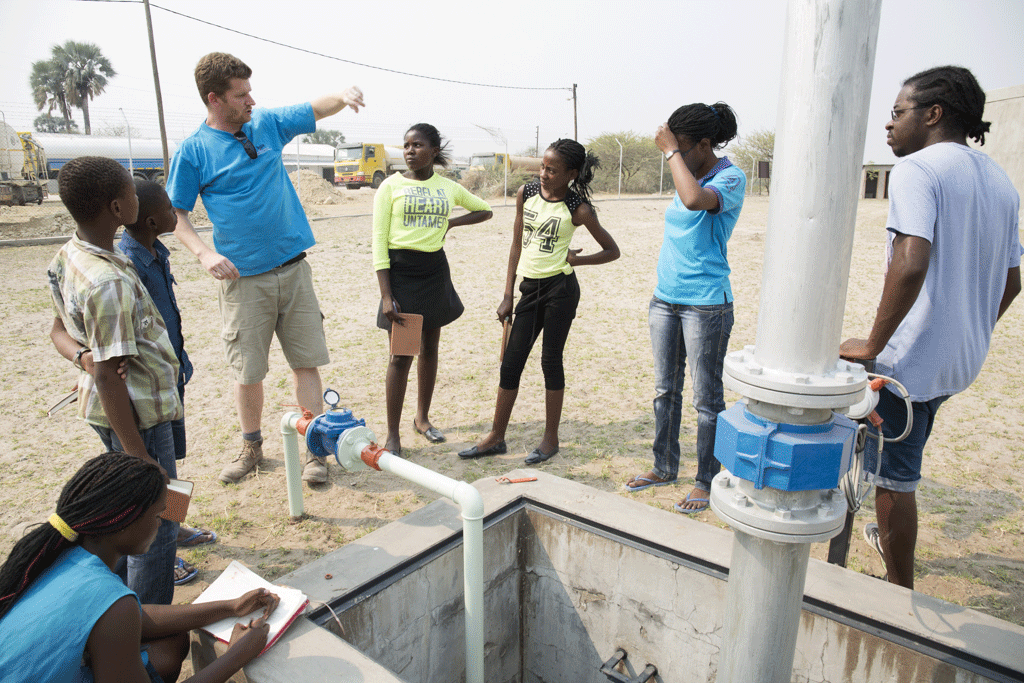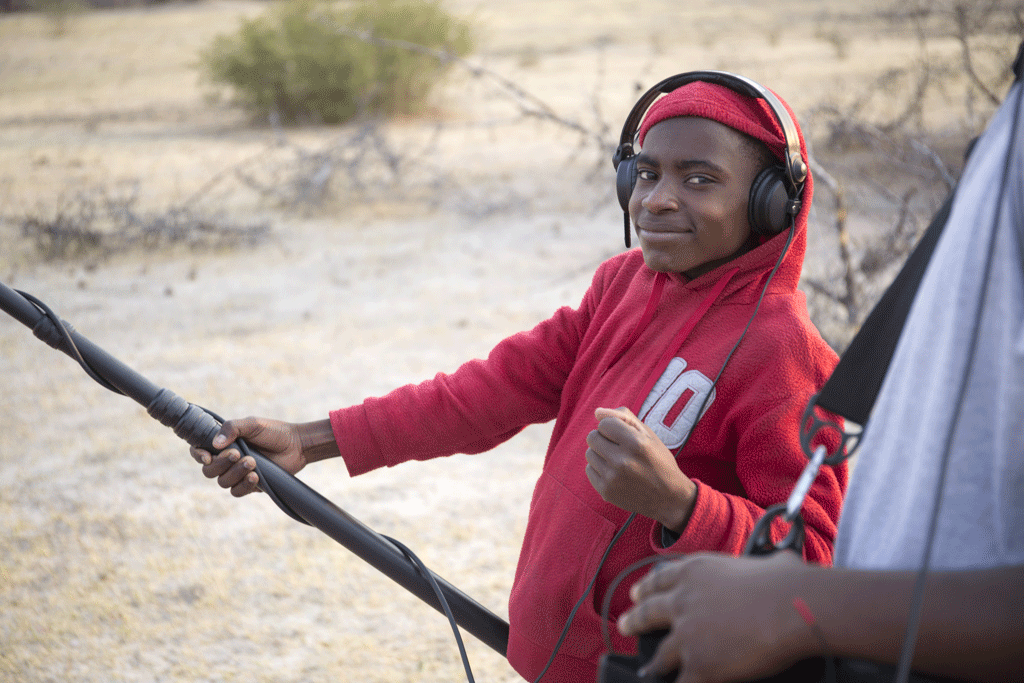Namibia Youth Film Project
A conversation with Sarah Sandring about the making of OMEVA / Excerpt DVD-booklet
OMEVA – Water (BGR, 45 min, 2016)
Ms. Sandring, Namibian and German filmmakers and governmental institutions teaming up to make a film with youths in rural Namibia – what an unusual combination. Tell us more about the background of this project.
You are right, these kinds of constellations are still rare. However, I myself often work in collaborative projects that invite local communities to tell their own stories. As documentary filmmaker and photographer, I love the directness of these collaborations. Especially children and youth are close observers of the world around them and are often more courageous and up-front to talk about issues in their community.
This is why the German Federal Institute for Geosciences and Natural Resources (BGR) approached me about doing a documentary film project with youths in Northern Namibia. BGR has been working in this drought-ridden area for years, trying to tap into a newly discovered, deep groundwater layer and assisting Namibian colleagues in sensitizing the population about careful water consumption.
I applauded their idea to join up with EcoKids Namibia and Namibian ministries to create a film about water with youths from a drought-affected area. I saw this as an opportunity for a meaningful exchange and artistic collaboration. However, this kind of project is not possible without strong local partners. Namibian filmmaker Oshosheni Hiveluah and sound recordist Silvanus Amaambo joined our team to co-facilitate the film workshop and the creation of OMEVA.
OMEVA was created within a youth film project, still the film looks like it was made by experienced filmmakers, how is that?
To answer that question, we need to look at the way we structured the film project. BGR wanted to create a film training experience for youth while -at the same time- making a high-quality collaborative documentary about the subject of water in their community. We had a time frame of three and a half weeks to work with the kids and make the film. This tight frame was both a challenge and an opportunity. But it worked!
The project was divided into two phases. The first week consisted of intense film training: learning to respect each other’s unique view, seeing the world in a frame, telling a story through images, learning to operate the video equipment, working in a film team etc. This first week culminated in the completion of five short portrait films, one about each workshop participant. It was an intense whizzing through all aspects of filmmaking and the kids did great on their first films made all on their own, rotating through all crew positions.
Based on this experience, we started into the main film project on ‘water’, for which crew positions were assigned. We worked in youth-adult teams, where the young filmmakers had the chance to closely watch professionals at work and take over when high-pressure situations were done. This worked out great: a learning experience that maintained a sense of ownership.
Most importantly, the participants contributed their own wealth of experiences concerning water scarcity. The workshop involved a lot of autobiographic writing and research within their families on traditional knowledge and Oshivambo proverbs about water. Based on these witness accounts, Ndilipomwene Haimbodi (age 14), one of the workshop participants, together with Oshosheni Hiveluah, wrote the narration of the film. This interweaving of experiences and skills shaped the direct feel of the film and the warm relationships with our protagonists.
Why are community art collaborations like OMEVA important and how will the film be used?
The film will be used to spark discussion about water both, in Namibia and internationally, at film festivals, local screenings, conferences etc. It is a complex film showing that there are no easy answers, which is good to get conversations going.
I think collaboration with local communities are essential for our global human exchange. Arts and media offer great opportunities for connecting with each other. Local communities are the experts for their land, the plants and animals they coexist with, their history and culture, and their present-day needs. In the case of OMEVA, there is a lot Namibian and international audiences can learn from the perspective of our young filmmakers and the stories of our protagonists.
The Groundwater Management Project of BGR created a wonderful example of how public communication about technical cooperation can be done differently by facilitating this youth film collaboration. EcoKids Namibia will continue working with our five youth filmmakers and support them if they are interested in further pursuing filmmaking.
Federal Institute for Geosciences and Natural Resources (BGR), Germany
Federal Ministry of Economic Cooperation and Development (BMZ), Germany
EcoKids Namibia







